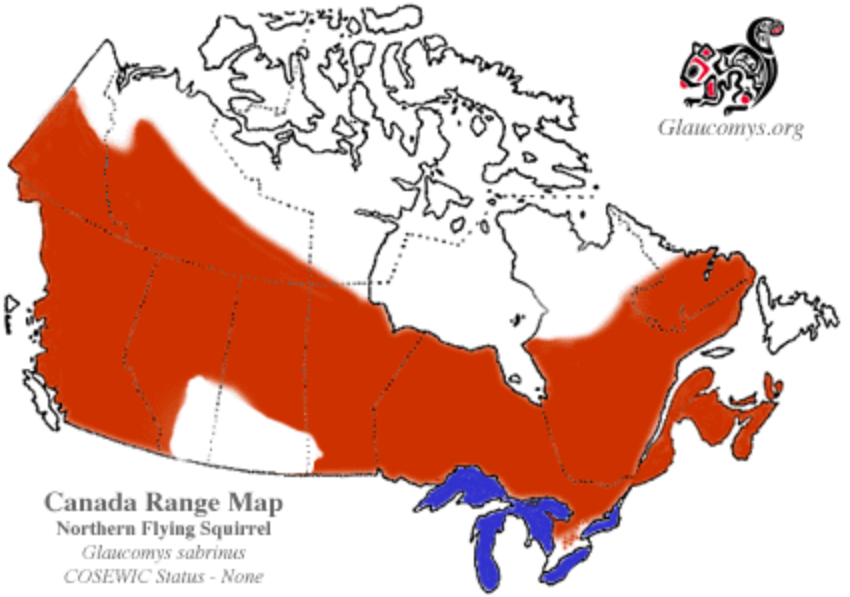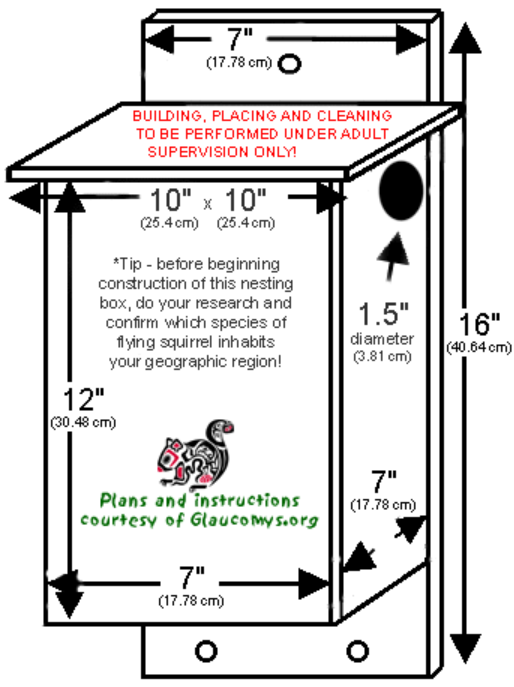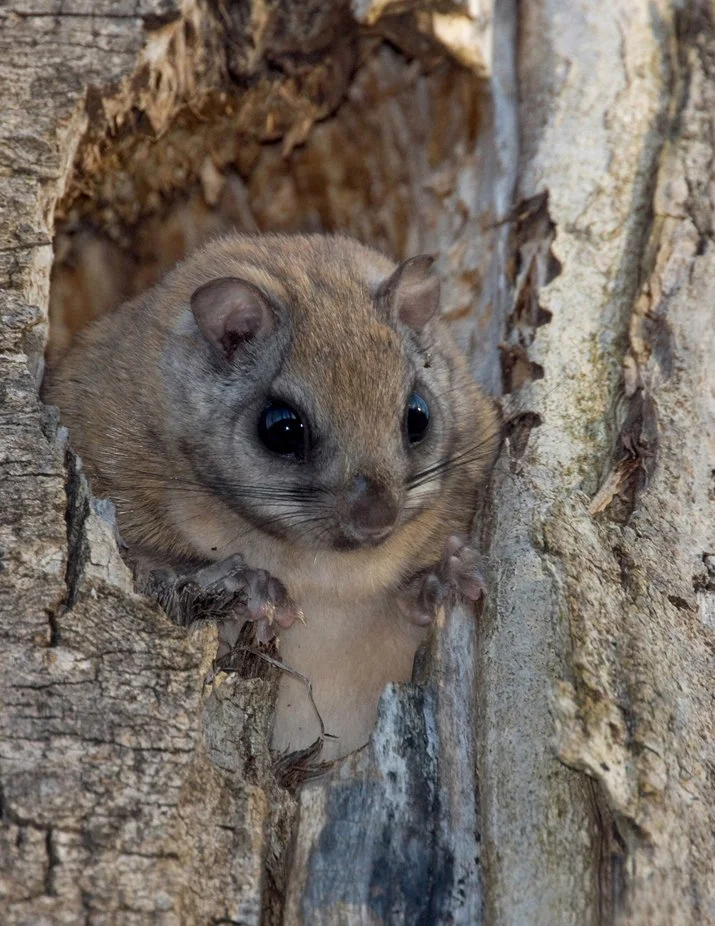Project Ideas
Flying Squirrel Nesting Box
What can you do to help?
Flying squirrel populations are threatened by habitat loss (deforestation) since they need good canopy cover to allow them to glide between trees.
If you live in a forested area, consider building a nesting box!
Canada Range Map of the Northern Flying Squirrel
Nesting Box Dimensions
Nesting in a snag (a dead or dying tree)
Building Tips
Access hole no larger than specified
Waterproof the top with a bead of caulking
Drill 1/4" ventilation holes in the bottom corners and on each side
Use natural (untreated) softwood – 3/4" to 1“ thick
DO NOT stain or paint interior or exterior
DO NOT use plywood or chipboard
If you use smooth wood, roughen the exterior with a rasp or coarse sandpaper for better "gripability"
Provide a hinged door for cleaning purposes (front or side access)
Clean ONLY during January or February
Placement Tips
Place your nesting boxes…
In the oldest stands of coniferous or mixed forest
Minimum 10’ (3 m) high and maximum 26’ (8 m) high
With the access hole directed away from prevailing wind
So predators cannot reach the box from other tree limbs
Near water (marsh, creek, etc.) or in wet forest areas if possible
Install several boxes per 1/4 hectare
Flying squirrels need alternate nesting sites for predator and parasite avoidance
Attract flying squirrels by placing acorns or other nuts, after dark, on a feeding platform about 5’ from the ground. Cast indirect light on the platform and see if you have visitors!
More Info
Information, photos, and building plan courtesy of Canadian Wildlife Federation (2022)



